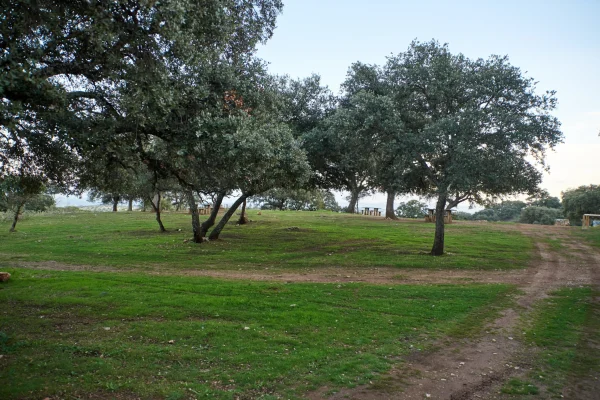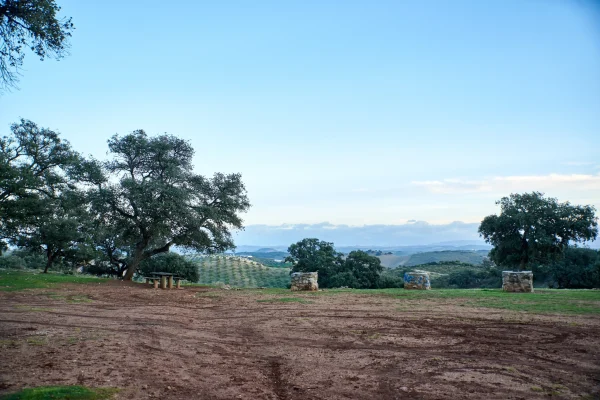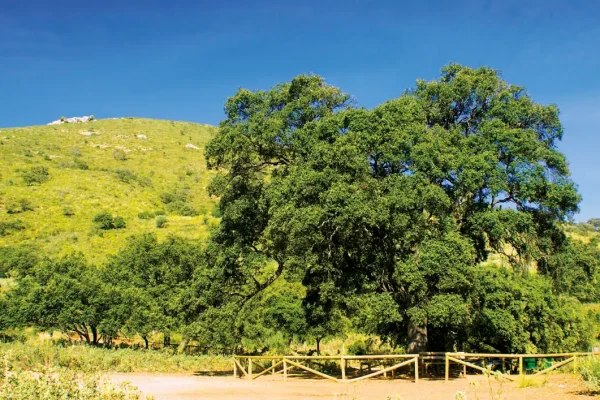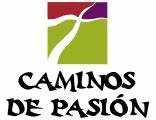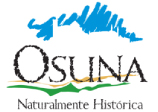
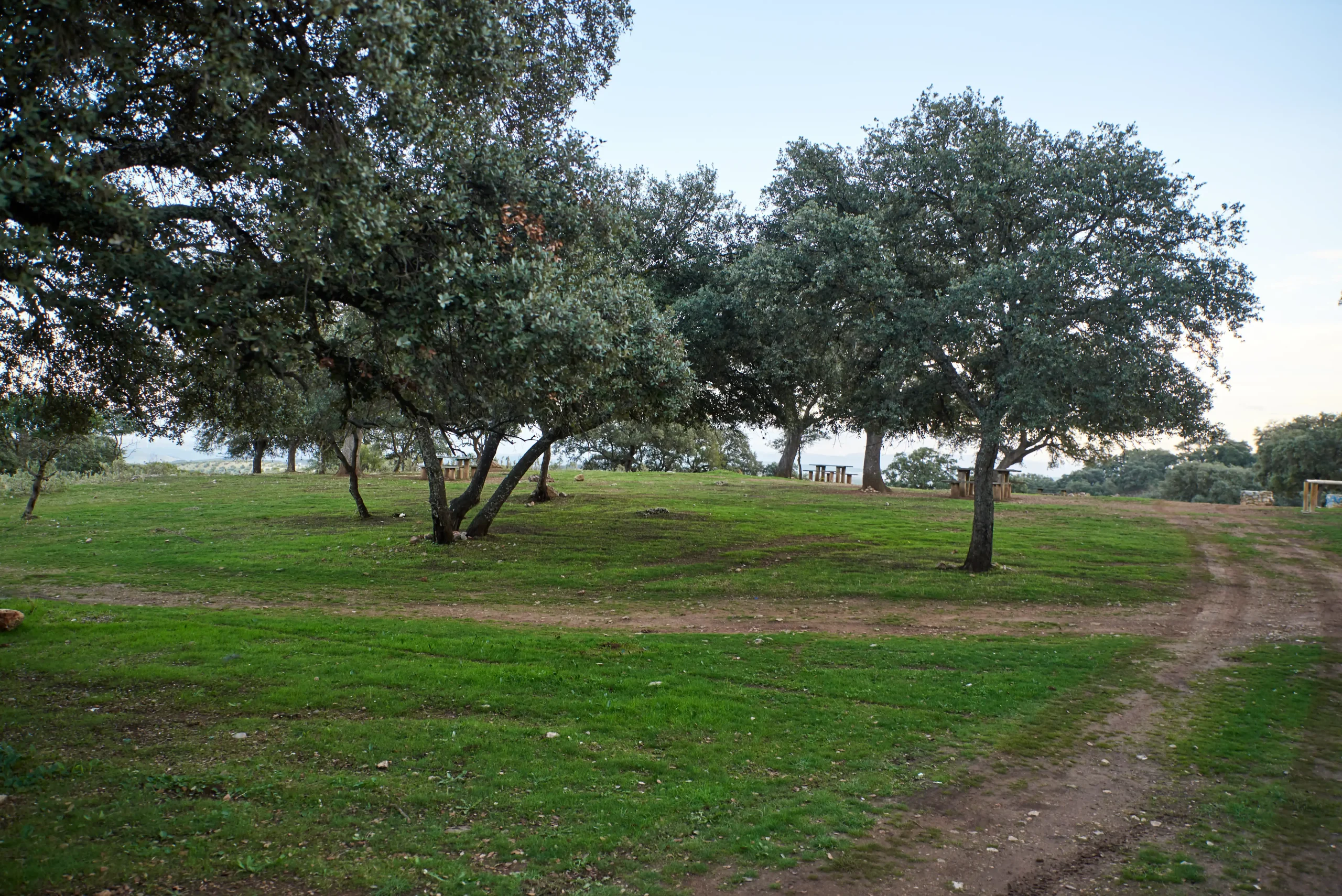

| TRAIL TYPE | NAME | TIME | DISTANCE |
|---|---|---|---|
| SL-A 159 | LA GOMERA | 50min | 2,8 km |
The trail begins next to the A-451 road towards El Saucejo at kilometre 13.4, where you will find a paved road and, a few metres further on, a dirt track. This is the Cañada Real de Ronda, which, coming from Calle Nuestra Señora de Fátima, has crossed the Salado River and the areas of Boca del Sabinal, Marchelina, El Vínculo, Piedra del Cristiano, Rancho Caballero, Cortijo Vendaval, and Rancho Pescao, until it reaches the Fuente de la Gomera, which is the first landmark you will encounter when taking this trail.
Next, you will reach the Gomera picnic area and viewpoint where, thanks to a collaboration agreement between Osuna Town Council and the Regional Ministry of the Environment of the Regional Government of Andalusia, the Cañada Real was demarcated and restored, providing it with this public environmental facility.
Finally, we will reach the valley between La Gomera and El Gomerón, where we will find a magnificent spot for bird watching. If you pay attention and remain silent, you will be able to enjoy the flight and song of different birds, such as:
The griffon vulture (Gyps fulvus), eagle owl (Bubo bubo), common kestrel and lesser kestrel (Falco tinnuculus and Falco naurnanni), wood pigeon (Columba palumbus), song thrush (Turdus philornelos), jackdaw (Corvus monedula), Starling (Sturnus unicolor), Rock Bunting (Galerida teclas), etc.
Fountain of La Gomera
This spring is located within an ancient watering hole and resting place called Fuente de la Gomera, covering an area of 2 hectares. This site is where the Cañada Real de Ronda and the Vereda de El Colmenar de la Partera converge, making it a popular place for livestock to rest and drink during transhumance.
This area is located within the Gomera region, forming part of the Middle Subbetic Mountains, where the main peaks are Gomera (810 m) and Gomerón (754 m). This area is irrigated by a large number of streams. Beautiful gallery forests grow on the banks of these streams, such as the one found on the Gomera stream.
In these mountainous areas, there is an ecosystem known as Dehesa, whose main representative in this area is the holm oak (Quercus rotundifolia). These holm oaks and some Portuguese oaks (Quercus faginea) are densely distributed across the land, creating a genuine microclimate due to the abundant shade they provide, contributing to the enrichment of organic matter and allowing other species to flourish.

